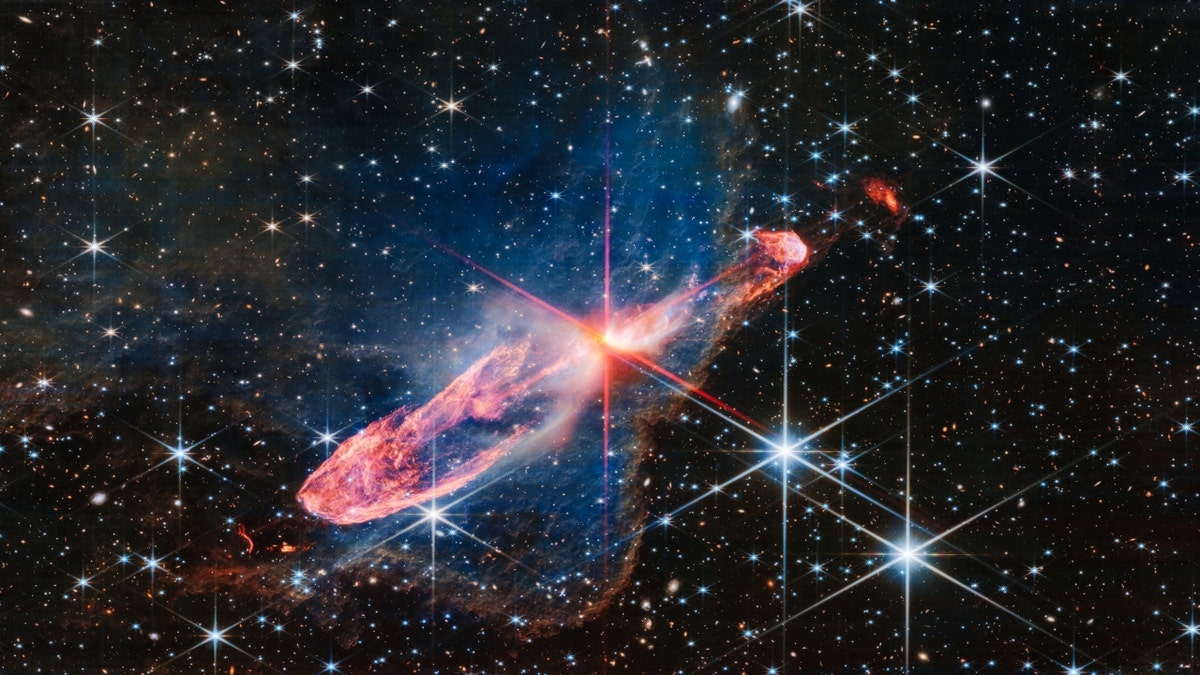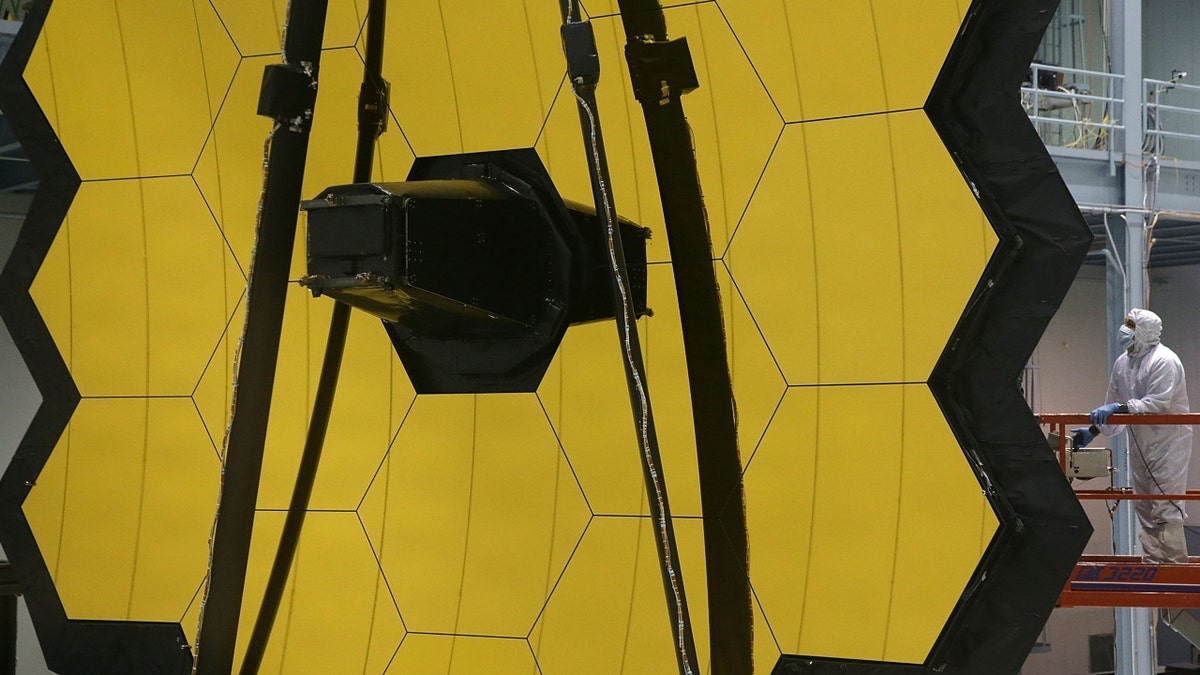Webb Space Telescope allows us to 'look into the past': Theoretical physicist
Theoretical physicist Dr. Michio Kaku explains the significance of new images provided by NASA's Webb Space Telescope on 'Sunday Night in America.'
The James Webb Space Telescope has captured the activity of a pair of forming young stars in high-resolution near-infrared light.
These stars, known as Herbig-Haro 46/47, are imaged within the orange-white splotch, buried in a disk of gas and dust.
The disk, which is not visible other than its shadow, feeds their growth as they continue to gain mass.
Its shadow can be seen in the two dark, conical regions surrounding the central stars.
ALIEN CRAFT COULD HAVE CAUSED 'MOST BIZARRE ROCK' ON MARS, SCIENTISTS CLAIM

NASA’s James Webb Space Telescope has captured a tightly bound pair of actively forming stars, known as Herbig-Haro 46/47, in high-resolution near-infrared light. Look for them at the center of the red diffraction spikes, appearing as an orange-white splotch. Herbig-Haro 46/47 is an important object to study because it is relatively young – only a few thousand years old. Star systems take millions of years to fully form. Targets like this give researchers insight into how much mass stars gather over time, potentially allowing them to model how our own sun, which is a low-mass star, formed – along with its planetary system. (Credits: Image: NASA, ESA, CSA. Image Processing: Joseph DePasquale (STScI))
The two-sided lobes extending outward from the actively forming central stars are shown in orange, made up mostly of material shot out from the stars as they repeatedly ingest and eject the gas and dust that surround them over thousands of years.
However, when material from more recent ejections runs into older material, it changes the shape of these lobes.
The more recent ejections are shown in blue, running below the red horizontal diffraction spike, with clearer wavy patterns on the right side.
Some disconnected ejections end in purple light and curly blue lines on the left also emerge.

A technician stands next to the James Webb Space Telescope during assembly November 2, 2016, at NASA's Goddard Space Flight Center in Greenbelt, Maryland. (Photo by Alex Wong/Getty Images)
HUBBLE SPACE TELESCOPE FINDS BOULDERS POTENTIALLY SHAKEN OFF ASTEROID FOLLOWING DART EXPERIMENT
NASA says that all the jets are critical to star formation itself, and notes that ejections regulate how much mass the stars ultimately gather.
The blue cloud in the image is a nebula, appearing nearly completely black in visible light.

Sprawling across the constellation Vela is a complex of dark, dense clouds of dust and gas on Feb. 1, 2016. The complex is called the Vela Molecular Cloud Ridge. (Photo12/Universal Images Group via Getty Images)
Using the telescope, scientists can see through the cloud, bringing the stars into focus and revealing more stars and galaxies that lie beyond it.
"This nebula is significant – its presence influences the shapes of the jets shot out by the central stars. As ejected material rams into the nebula on the lower left, there is more opportunity for the jets to interact with molecules within the nebula, causing them both to light up," the agency explained.
CLICK HERE TO GET THE FOX NEWS APP
The smaller right half of Herbig-Haro 46/47 – located just 1,470 light-years away in the Vela Constellation – is angled slightly closer to Earth.
Over millions of years, NASA says the stars will fully form.


